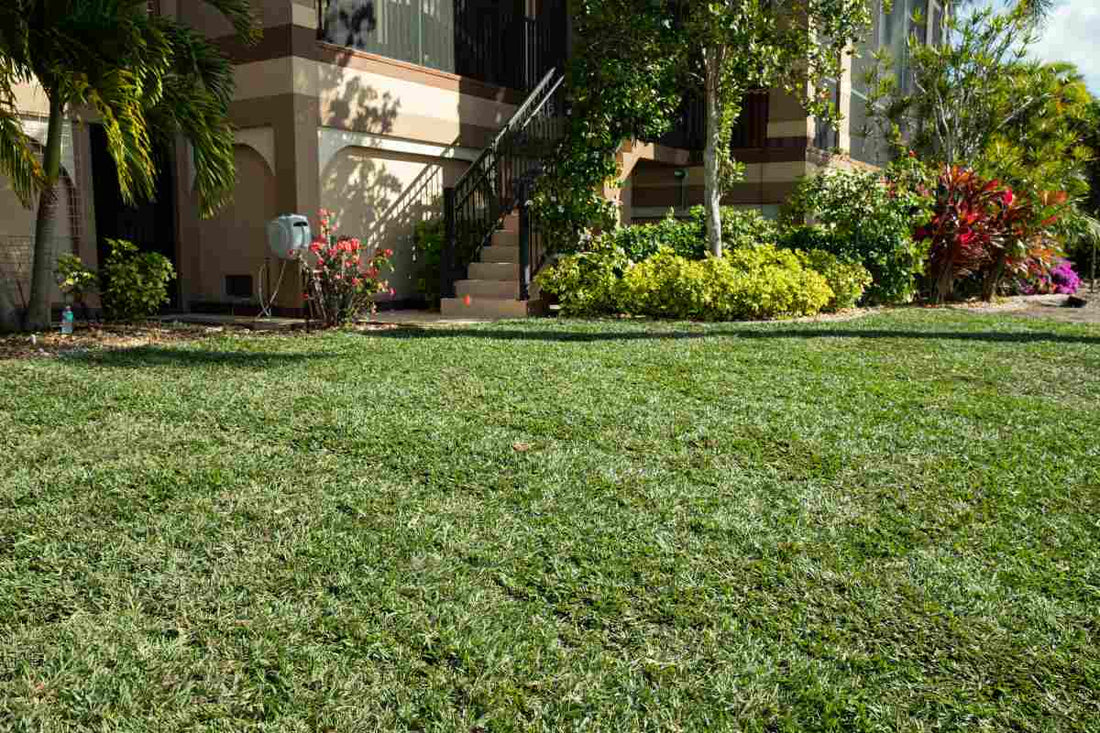
Sod Measurement Tips for Irregularly Shaped Lawns
Jamie TedderIf every lawn were a perfect square or rectangle, determining how much sod to buy would be straightforward: a quick calculation of length multiplied by width, and you’d be all set. But in reality, most yards have curves, slopes, walkways, and other non-grass elements and obstacles that create irregular shapes. These factors complicate lawn measurements, and estimating how much sod you need for a unique lawn layout requires more than simple geometry.
Sod can transform a patchy, bare lawn into a lush, green expanse almost instantly. However, sod installation can be costly, making precise measurements essential to avoid buying too much or too little. Unless you're hiring a professional, the responsibility falls on you to accurately measure, order, install, and maintain the sod for the best results.
The Importance of Accurate Measurements When Ordering Sod
When buying sod, accurate estimates ensure you will not end up with excess sod you don't need or come up short, risking patchy coverage and the hassle of reordering.
For straightforward shapes like squares and rectangles, calculating sod requirements is simple. Measure the length and width, then multiply these values to get the total square footage. For example, a 20-foot by 10-foot area requires 200 square feet of sod (20 x 10 = 200 square feet). For larger projects, break the space down into smaller, manageable sections, calculate each section separately, then add up the totals to find how much sod you need.
In circular or oval areas, the formula is slightly different. Measure the longest diameter (for circles) or the average width and length (for ovals). For a circle, use the formula π × radius² (with π as approximately 3.14). For ovals, multiply the average width by the average length, then multiply by 0.8 to get a good estimate. Check out our complete guide for more tips on measuring how much sod you need, as well as step-by-step instructions on how to lay sod.

Tips and Tricks for Measuring Sod for Irregular Shapes
Measuring irregularly shaped lawns for sod can seem challenging, but the objective is to ensure full coverage without over or underestimating. In many cases, it’s better to order some extra sod than risk ending up short.
1. Account for Slopes
If your yard has slopes or uneven areas, measure them separately to cover these spots adequately. Slopes require more sod than flat surfaces due to the additional surface area. For complex slopes, calling a professional may help ensure accurate measurements and proper coverage.
2. Split Irregular Shapes into Manageable Sections
For irregularly shaped areas, break them down into smaller shapes like squares, rectangles, or triangles. Measure each shape individually, using the length and width for squares and rectangles and base times height divided by two for triangles. This method allows you to calculate sod needs with greater accuracy.
3. Exclude Non-Grass Areas and Obstacles
Remember to subtract the square footage of non-grass areas like patios, driveways, walkways, garden beds, or tree bases from the total square footage. Excluding these areas from your measurements reduces unnecessary sod waste, thus saving you money.
4. Add Up the Sections
Once you’ve measured all the sections in your yard, add up each area’s square footage to get the total. This will give you a more accurate number for your sod order.
5. Order Slightly More Than Needed
After calculating the total area, it’s a good idea to order a little more than you need. This allows for slight measurement errors and provides enough sod to accommodate irregular shapes, cuts, and waste. When installing, ensure there are no gaps between sod pieces to achieve seamless coverage without overlapping, which keeps the sod from drying and reduces weed growth. Measure twice to double-check your figures and avoid ordering too much or too little sod.
How to Account for Wastage When Measuring for Sod
Wastage refers to sod that is not used or discarded during installation, often due to irregular lawn shapes or trimming around obstacles. When ordering sod, add a small buffer for wastage. Irregular shapes and necessary cut-offs often mean that some sod will be left unused. By ordering around 5% more than your calculated area ensures you have enough to work around these challenges without needing additional orders.

Sod Measurement Mistakes to Avoid
- Misjudging Lawn Shape Complexity: Measuring a complex shape without dividing it into simpler sections can lead to inaccurate estimates. Always break down irregularly shaped lawns into manageable sections for more reliable calculations.
- Forgetting to Exclude Non-Grass Areas: If you forget to subtract areas like patios, driveways, and flower beds, you’ll likely end up with more sod than you need. Remember to deduct these non-grass spaces to save money and prevent sod waste.
- Not Accounting for Slopes and Uneven Terrain: Slopes and bumpy areas require more sod than flat surfaces, and skipping separate measurements for these areas could leave you short on sod. Always factor in extra sod for slopes to ensure even coverage.
- Overlooking Wastage and Cut-Offs: Not planning for waste can result in running short of sod, especially in irregularly shaped lawns where there’s likely to be overlap and excess trimming.

